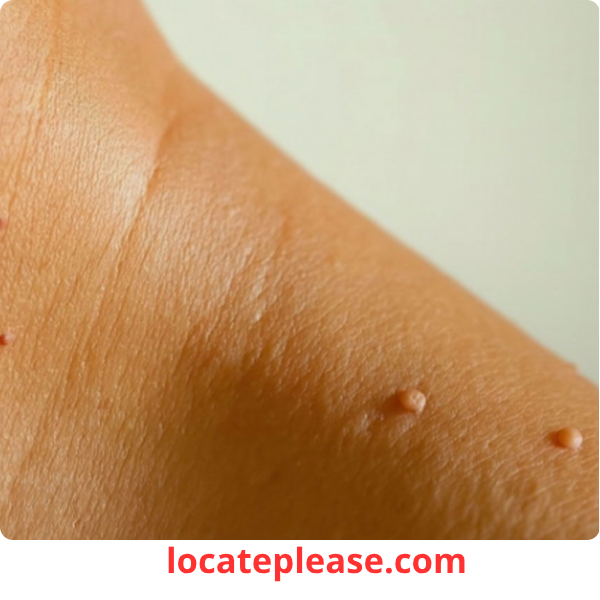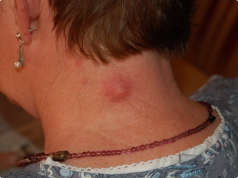If you’ve noticed small, soft, flesh-colored flaps of skin appearing on your neck, armpits, groin, or under the breasts, you’re not alone — and it’s likely not a mole.
What you’re seeing are skin tags — medically known as acrochordons — one of the most common benign skin growths in adults.
While completely harmless, skin tags can be irritating, unsightly, or a source of self-consciousness — especially when they catch on jewelry, clothing, or during shaving.
So why do they appear? And more importantly — how can you safely remove them?
Let’s dive into what dermatologists say about this common skin condition.
Skin Tags vs. Moles: What’s the Difference?
First, let’s clear up a common confusion:
Skin tags are not moles.
|
Color
|
Flesh-colored or slightly darker
|
Brown, black, or tan
|
|
Texture
|
Soft, smooth, often on a thin stalk
|
Flat or raised, uniform texture
|
|
Location
|
Skin folds — neck, armpits, groin
|
Anywhere on the body
|
|
Cause
|
Friction, hormones, insulin resistance
|
Sun exposure, genetics, pigmentation
|
|
Cancer Risk
|
None — completely benign
|
Some moles can turn cancerous (melanoma)
|
Skin tags are small, soft, and movable — like a tiny piece of skin hanging by a thread. Moles are more solid and embedded in the skin.
✅ If you’re unsure, always see a dermatologist to rule out anything serious.
Why Do Skin Tags Appear? The Science Behind the Flap
Skin tags are made of collagen fibers, blood vessels, and an outer layer of skin. They form when clusters of tissue grow in the top layers of the skin — often where skin rubs against skin or clothing.
🔍 Key Causes & Risk Factors:
- Friction & Chafing
Common in skin folds — like the neck and underarms — where skin constantly rubs together or against collars, bra straps, or jewelry. - Genetics
If your parents or siblings have skin tags, you’re more likely to get them — some people are just genetically prone. - Hormonal Changes
- Pregnancy — rising hormones and weight gain can trigger skin tags
- Insulin resistance — linked to increased skin cell growth
- Age
They become more common after age 40 as skin loses elasticity and undergoes more changes. - Obesity & Skin Folds
More skin folds = more friction = higher chance of skin tags. - Type 2 Diabetes & Insulin Resistance
Studies show a strong link between multiple skin tags and high insulin levels — so their presence can sometimes be a warning sign of metabolic issues.
🩺 Fun fact: Having 10 or more skin tags may suggest undiagnosed insulin resistance or prediabetes — worth discussing with your doctor.
Are Skin Tags Dangerous?
✅ No.
Skin tags are non-cancerous, non-contagious, and completely harmless.
They don’t turn into skin cancer.
They don’t spread.
They don’t hurt — unless irritated.
But if a skin tag:
- Bleeds, itches, or turns black
- Grows rapidly
- Changes in color or texture
👉 See a dermatologist. These could be signs of something else — like a wart, mole, or rare skin tumor.
How to Remove Skin Tags Safely — 5 Dermatologist-Approved Methods
While skin tags don’t need to be removed, many people choose to for comfort or cosmetic reasons.
⚠️ Never cut, pull, or tie off a skin tag at home — this can cause infection, scarring, or excessive bleeding.
Instead, consult a healthcare provider. Here are the safest, most effective options:
|
Cauterization
|
Burns off the tag with heat
|
Small to medium tags
|
|
Cryotherapy
|
Freezes the tag with liquid nitrogen
|
Multiple tags, sensitive areas
|
|
Surgical Excision
|
Cuts it off with sterile scissors
|
Larger or thick-based tags
|
|
Laser Treatment
|
Uses focused light to vaporize the tag
|
Face, neck, delicate areas
|
|
Ligation
|
Ties off the base with surgical thread — cuts blood supply
|
Tags on a narrow stalk
|
All procedures are quick, usually done in-office, and may involve a local anesthetic for comfort.
Aftercare: What to Do After Removal
To prevent infection and scarring:
- Keep the area clean and dry
- Apply antibiotic ointment if advised
- Avoid scratching or picking
- Protect from sun exposure — use sunscreen to prevent dark spots
- Watch for redness, swelling, or pus — signs of infection
Healing typically takes 7–10 days, depending on size and method.
Can You Prevent Skin Tags?
You can’t eliminate the risk, but you can reduce it:
- Wear loose-fitting clothing to reduce friction
- Keep skin folds dry — use talc-free powder if needed
- Maintain a healthy weight — fewer skin folds = less friction
- Manage blood sugar — especially if you have prediabetes or diabetes
DIY Removal? Experts Say: Don’t Risk It
You may see home remedies online — like tying a string around the tag or using apple cider vinegar.
But dermatologists strongly warn against DIY removal:
- Risk of infection
- Potential for scarring or disfigurement
- Mistaking a dangerous growth for a skin tag
🚫 Never attempt removal without professional guidance.
Final Thoughts: Let Your Skin Breathe — Safely
Skin tags are a normal part of life for millions.
They’re not a flaw.
They’re not a failure.
They’re just skin — responding to friction, hormones, and time.
But if they bother you — physically or emotionally — safe, effective removal is available.
So don’t suffer in silence or risk your skin health with scissors and string.
Talk to a dermatologist.
Get answers.
Get relief.
Because your skin deserves care — not compromise.
Smooth, confident, and irritation-free — that’s the goal.










